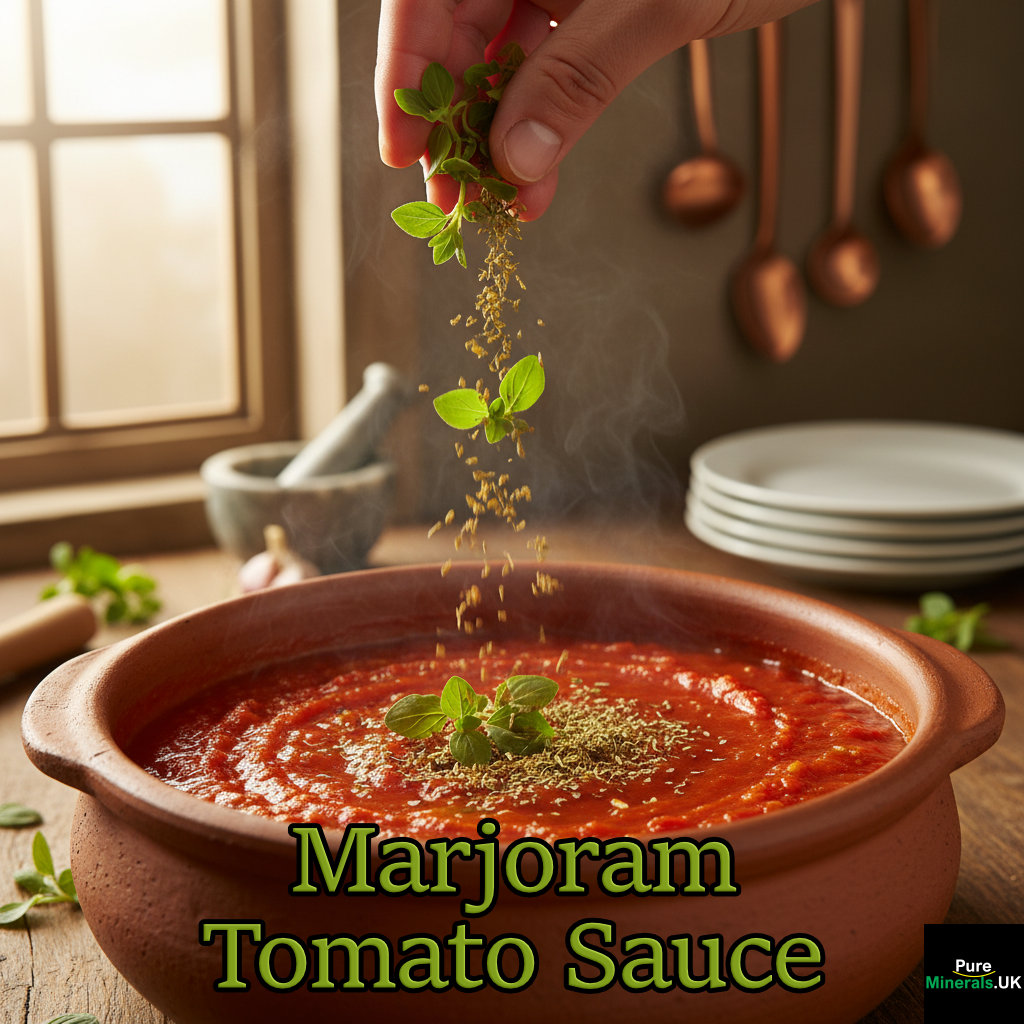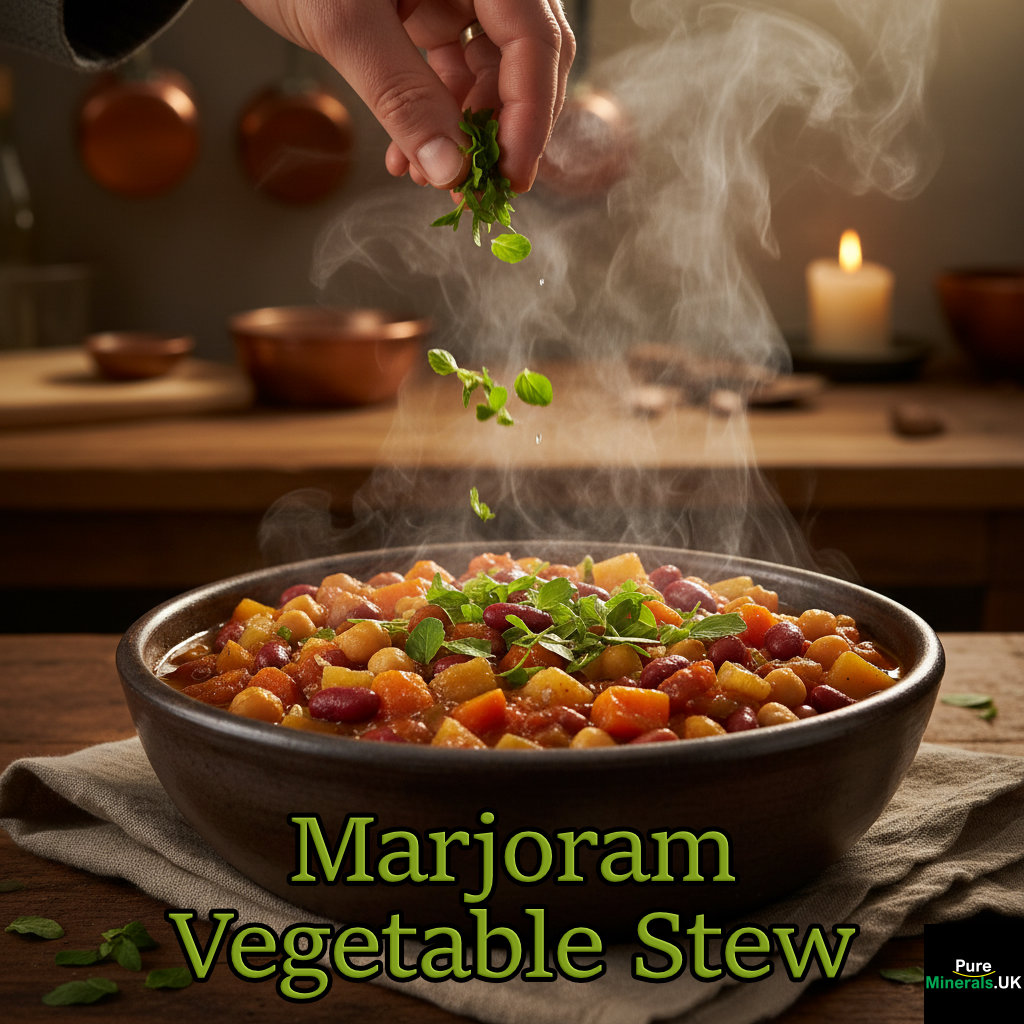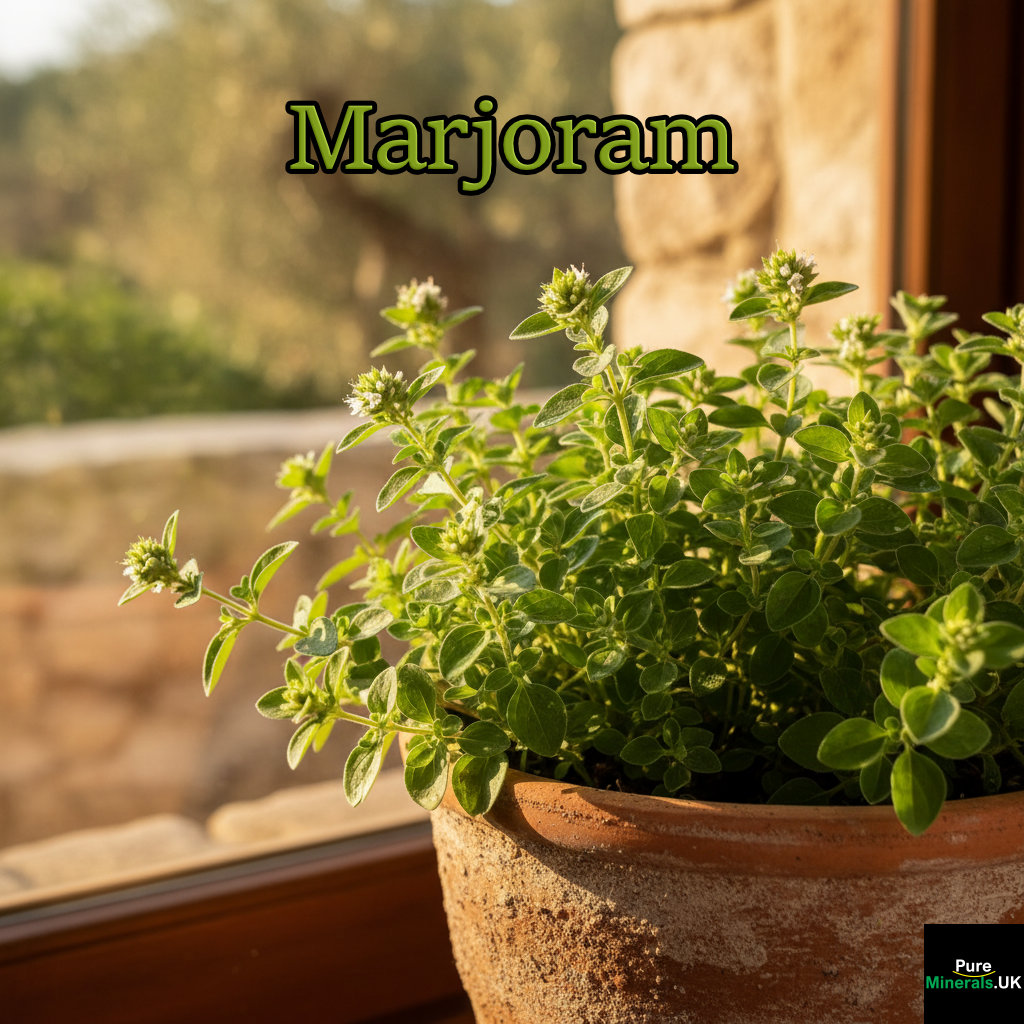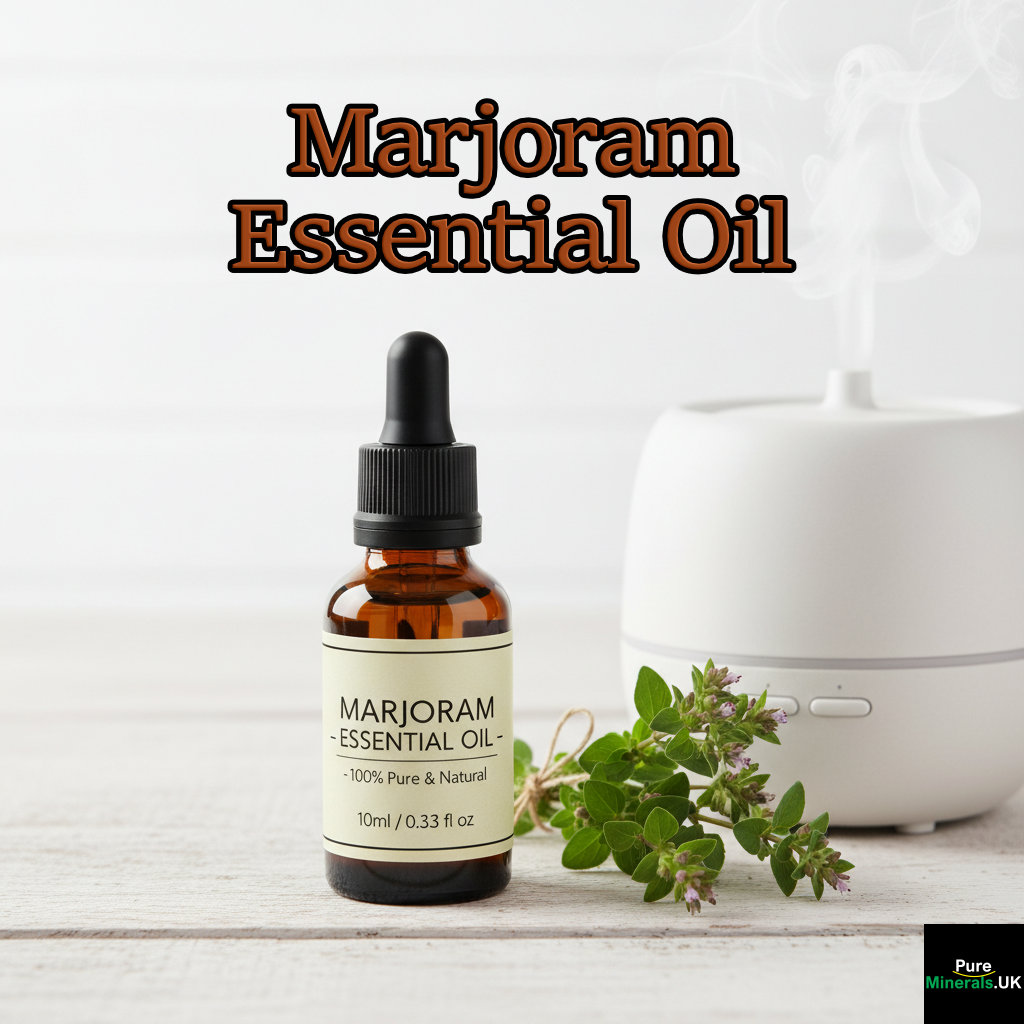
Key Takeaways
- Marjoram offers powerful digestive benefits including reduced stomach discomfort and improved gut function
- This herb contains higher antioxidant levels than its cousin oregano, especially when used fresh
- Marjoram can help balance hormones in women and potentially reduce symptoms of polycystic ovary syndrome
- Its gentle, sweet flavor enhances dishes without overpowering them, making it perfect for delicate sauces and poultry
- Beyond cooking, marjoram essential oil provides therapeutic benefits for stress reduction and muscle tension
Hidden in kitchen cabinets worldwide sits a humble herb that deserves far more recognition than it receives. While oregano often steals the spotlight, marjoram quietly offers a treasure trove of culinary enhancement and health benefits that may surprise even seasoned herbalists.
Marjoram (Origanum majorana) belongs to the aromatic mint family and shares much of its genetic makeup with oregano, yet offers a gentler, more nuanced experience in both cooking and natural wellness applications. Marjoram’s healing properties have been valued across cultures for centuries, though modern research is only now catching up to traditional wisdom.
What Makes Marjoram Nature’s Hidden Culinary Treasure

The story of marjoram is one of quiet excellence. While its cousin oregano boldly announces itself in every dish, marjoram works subtly in the background, elevating flavors without dominating them. This delicate balance makes it a chef’s secret weapon, particularly in Mediterranean and European cuisines where nuance is everything.
The Overlooked Herb in Your Kitchen Cabinet
Many home cooks own marjoram without realizing its potential. Often purchased as part of poultry seasoning or herbes de Provence blends, this herb frequently remains underutilized. When given proper attention, however, marjoram transforms ordinary dishes into memorable ones. Its ability to enhance without overwhelming makes it particularly valuable in delicate sauces, vegetable preparations, and poultry dishes where heavier herbs might dominate.
How It Differs From Its Famous Cousin Oregano
Though frequently confused with oregano, marjoram stands apart in several important ways. Where oregano delivers a bold, somewhat peppery punch, marjoram offers a more complex sweetness with floral undertones. This distinction becomes particularly important when working with lighter proteins like chicken or fish, where oregano might overpower, while marjoram complements.
The physical differences are subtle but important. Marjoram plants typically grow to be smaller (12-14 inches tall) than oregano plants and feature softer, oval-shaped leaves with a velvety texture. When flowering, marjoram produces delicate white or pink blossoms that attract beneficial pollinators to gardens.
The Rich History and Cultural Significance of Marjoram
Long before modern medicine, marjoram held a place of honor in ancient healing traditions. Its journey through history reveals how deeply intertwined this herb has been with human experience across millennia.
Ancient Mediterranean Origins and Symbolic Meaning
Marjoram’s story begins in the sun-drenched landscapes of the Mediterranean, where it grew wild before being cultivated by early civilizations. In ancient Greece, the herb symbolized happiness and was woven into wedding crowns as a blessing for couples. Greek mythology tells that Aphrodite, goddess of love, was said to favor the herb, giving it significance in matters of the heart.
The Romans continued this tradition, using marjoram in both celebration and mourning rituals. They believed the herb could purify spaces and protect against negative energies, leading to its inclusion in household cleansing ceremonies. This spiritual significance carried through medieval Europe, where marjoram was planted around doorways to guard against evil spirits.
Traditional Uses Beyond the Kitchen
Beyond cooking, marjoram found its way into traditional medicine cabinets throughout history. In ancient Egypt, it was used in embalming rituals and medicinal preparations. Medieval European herbalists prescribed marjoram tea for headaches, digestive ailments, and respiratory issues. Perhaps most interestingly, singers historically drank marjoram tea sweetened with honey to preserve their voices before performances.
Herbalists across cultures recognized marjoram’s calming properties, using it to ease anxiety and promote restful sleep. This traditional knowledge formed the foundation for many of the therapeutic applications we understand today, demonstrating the remarkable consistency in human experience with this gentle herb across different times and places.
Marjoram’s Distinctive Flavor Profile
Understanding marjoram’s unique flavor is key to appreciating its versatility in cooking. Unlike stronger herbs that can easily dominate, marjoram brings a harmonious touch that enhances without overpowering other ingredients. This delicate balance makes it an excellent choice for both beginning and experienced cooks looking to add dimension to their dishes. For those interested in exploring other unique herbs, lemon balm also offers a gentle and complementary flavor profile.
The Gentle, Floral-Piney Notes That Enhance Dishes
Marjoram presents a complex flavor profile that combines sweetness with subtle pine and citrus undertones. When fresh, the herb offers a bright, almost floral quality that dances on the palate. As it dries, these notes concentrate and deepen, creating a more pronounced warmth that works beautifully in slow-cooked dishes. This evolution of flavor means that marjoram can play different roles depending on when and how it’s used.
The delicate complexity of marjoram makes it particularly valuable in dishes where you want layered flavors rather than a single dominant note. Its natural sweetness can help balance acidic ingredients like tomatoes or vinegar, creating more harmonious flavor profiles in sauces and dressings. This balancing act is one reason many Mediterranean cooks consider marjoram essential to their culinary toolkit.
Why Chefs Prize Its Balanced Taste
Professional chefs often turn to marjoram when they need nuance and subtlety. Unlike more assertive herbs that announce themselves immediately, marjoram works more like a supporting actor, elevating the entire ensemble without stealing the spotlight. This quality makes it particularly valuable in refined cuisine, where balance is everything, much like how lavender can add a delicate touch to dishes.
The herb’s gentle nature allows it to complement rather than compete with delicate proteins like fish, chicken, or eggs. It also pairs beautifully with other herbs, often serving as the bridge that helps disparate flavors come together in complex spice blends. In professional kitchens, marjoram frequently appears in stocks, broths, and foundation sauces where it contributes depth without dominating the final dish.
Top 7 Health Benefits of Marjoram
Beyond its culinary applications, marjoram offers numerous health benefits supported by both traditional wisdom and modern scientific research. These healing properties explain why the herb has remained valued across cultures and centuries as both food and medicine, much like lemon balm.
1. Digestive System Support
Marjoram’s most celebrated health benefit is its ability to soothe and support the digestive system. The herb contains compounds that help relax the smooth muscles of the digestive tract, potentially reducing cramping and spasms. This antispasmodic quality makes marjoram tea particularly effective for addressing indigestion, bloating, and general stomach discomfort.
Research suggests that marjoram may also stimulate bile production, which helps break down fats and supports overall digestive efficiency. This combination of muscle relaxation and improved bile flow explains why many traditional medicine systems recommend marjoram for digestive complaints ranging from mild indigestion to more persistent issues like irritable bowel syndrome.
2. Anti-inflammatory Properties
Modern research has identified potent anti-inflammatory compounds in marjoram that may help address various inflammatory conditions. These natural plant chemicals, including carvacrol and thymol, have demonstrated the ability to inhibit inflammatory pathways in laboratory studies. Such anti-inflammatory activity could explain why traditional herbalists used marjoram compresses for joint pain and muscle soreness, similar to how lemon balm is used for its soothing properties.
The concentrated form found in marjoram essential oil shows particular promise for topical applications targeting localized inflammation. When properly diluted and applied externally, these oils may help reduce discomfort from inflammatory skin conditions or minor injuries. However, internal use should always be guided by a qualified healthcare provider as concentrations can vary significantly. For more information on similar natural remedies, you might explore the benefits of lemon balm as well.
3. Stress and Anxiety Relief
The calming effects of marjoram on the nervous system have been recognized for centuries. Modern research suggests these effects may relate to compounds that interact with neurotransmitter systems involved in stress response. A cup of marjoram tea before bed has long been a traditional remedy for promoting restful sleep and calming an overactive mind.
Aromatherapy practitioners frequently recommend marjoram essential oil for stress relief applications. The scent profile, described as warm and comforting, may help trigger relaxation responses when used in diffusers or diluted for massage applications. This stress-reducing quality complements marjoram’s digestive benefits, as stress and digestive issues often occur together in conditions like irritable bowel syndrome.
4. Women’s Health Benefits
Marjoram offers several benefits specifically relevant to women’s health concerns. Research suggests the herb may help regulate hormonal balance, particularly in conditions where hormonal irregularities cause discomfort or health issues. One promising study found that drinking marjoram tea twice daily for one month helped improve hormonal profiles in women with polycystic ovary syndrome (PCOS).
The herb’s antispasmodic properties may also provide relief from menstrual cramping when consumed as a warm tea. Traditionally, herbalists recommended marjoram for both menstrual pain and irregularity, suggesting its effects on the female reproductive system have been observed across generations. These traditional applications align with emerging research on marjoram’s potential hormone-balancing effects.
5. Blood Pressure Regulation
Several compounds in marjoram may contribute to healthy blood pressure levels. Research indicates that certain components in the herb may help relax blood vessels, potentially reducing resistance to blood flow. This vasodilatory effect could explain why traditional medicine systems often included marjoram in formulations for supporting cardiovascular health.
The herb’s ability to reduce stress may also contribute indirectly to blood pressure management, as chronic stress is a known contributor to hypertension. While more research is needed before specific recommendations can be made, preliminary findings suggest that including marjoram regularly in the diet may support overall cardiovascular health as part of a balanced approach.
6. Ulcer Prevention
Laboratory studies have revealed that marjoram extracts may help protect the gastric mucosa—the lining of the stomach—against damage that can lead to ulcers. The herb appears to enhance the production of protective mucus and may help neutralize excess stomach acid, creating an environment less conducive to ulcer formation. These protective properties align with traditional uses of marjoram for various digestive complaints, similar to the benefits of licorice in soothing digestive issues.
Additionally, marjoram’s antimicrobial properties may help address H. pylori, a bacterium strongly associated with peptic ulcers. While clinical studies are still limited, this combination of protective and antimicrobial effects makes marjoram a promising natural ally for gastric health. Incorporating the herb into regular cooking may offer gentle, supportive benefits for those concerned about digestive integrity.
7. Antimicrobial Effects
Marjoram contains several compounds with demonstrated antimicrobial activity against a range of pathogens, including certain bacteria, viruses, and fungi. These properties explain why marjoram was traditionally used to preserve food and cleanse wounds before modern preservation techniques and antibiotics. The herb’s essential oil shows particularly strong antimicrobial effects in laboratory settings, though its real-world applications require careful consideration of concentration and safety.
How To Use Marjoram in Your Cooking
Incorporating marjoram into your culinary repertoire is easier than you might think. This versatile herb works beautifully in a wide range of dishes, from hearty soups to delicate sauces. Understanding how to pair it effectively will help you maximize its subtle yet distinctive contributions to your meals.
Perfect Pairings: Foods That Shine With Marjoram
Marjoram creates magic when paired with certain ingredients that highlight its unique flavor profile. Tomato-based dishes particularly benefit from marjoram’s sweetness, which balances acidity while adding complexity. This makes it perfect for pasta sauces, pizza, and Mediterranean vegetable stews.
Poultry and marjoram have a natural affinity, with the herb’s gentle flavor complementing rather than overwhelming the meat. Try adding it to chicken marinades, turkey stuffing, or poached chicken broth for an elevated flavor profile. The herb also pairs beautifully with root vegetables, particularly carrots and potatoes, bringing out their natural sweetness.
For unexpected but delightful combinations, try adding marjoram to mushroom dishes, where it enhances their earthy qualities, or to bean preparations like white bean soup or hummus. Egg dishes like frittatas and omelets also benefit from marjoram’s subtle touch, especially when combined with soft cheeses.
Fresh vs. Dried: When To Use Each Form
As with most herbs, fresh and dried marjoram offer different qualities that suit various cooking applications. Fresh marjoram delivers a brighter, more complex flavor with subtle floral notes that work beautifully in uncooked preparations like salad dressings, compound butters, and fresh sauces. Its delicate nature means it should be added at the end of cooking to preserve its nuanced flavor profile, similar to how lemon balm is often used for its gentle and aromatic qualities.
Dried marjoram, while less aromatic than fresh, provides a more concentrated flavor that holds up well in long-cooking applications. The drying process intensifies the herb’s sweetness while reducing some of its more volatile compounds, resulting in a more stable flavor that works well in slow-cooked stews, soups, and roasts. As a general rule, use one-third the amount of dried marjoram when substituting for fresh, as the flavor is more concentrated.
The Secret To Timing: When To Add Marjoram During Cooking
Timing is crucial when cooking with marjoram. For maximum flavor development in cooked dishes, add dried marjoram early in the cooking process, allowing it to infuse slowly into the dish. This works particularly well for soups, stews, and braised dishes where the herb has time to release its full flavor profile.
Fresh marjoram, however, requires a gentler approach. Add it during the last few minutes of cooking or even after removing the dish from the heat to preserve its delicate aromatic qualities. For cold preparations like salads or dips, mix fresh marjoram just before serving to experience its full flavor potential. This timing strategy ensures you’ll capture the herb’s complete range of subtle notes without losing them to prolonged heat exposure.
5 Delicious Ways To Incorporate Marjoram Today
Ready to experience marjoram’s culinary magic? These five applications showcase the herb’s versatility while making it easy to integrate into your everyday cooking routine. Each approach highlights different aspects of marjoram’s unique flavor profile.
1. Elevate Your Tomato Sauces

Transform ordinary tomato sauce into something extraordinary by adding marjoram alongside the more traditional basil or oregano. The herb’s subtle sweetness helps balance tomatoes’ acidity while adding complexity that makes even simple pasta dishes more sophisticated. For the best results, add dried marjoram early in the cooking process, then finish with a small amount of fresh marjoram just before serving to create layers of flavor.
2. Transform Ordinary Roasted Vegetables

Roasted vegetables develop remarkable depth when tossed with olive oil, salt, and marjoram before cooking. The herb’s gentle flavor infuses into vegetables during roasting without overwhelming their natural sweetness. Carrots, potatoes, cauliflower, and squash all pair particularly well with marjoram’s profile. Try mixing dried marjoram into the oil before coating vegetables, then garnishing with a sprinkle of fresh marjoram after roasting for maximum impact.
3. Create Signature Salad Dressings

Elevate homemade vinaigrettes by incorporating finely chopped fresh marjoram. The herb adds complexity that transforms simple oil-and-vinegar combinations into restaurant-quality dressings. For a Mediterranean-inspired option, combine fresh marjoram with lemon juice, olive oil, and a touch of honey. This bright, herbaceous dressing pairs beautifully with green salads, grain bowls, or as a light marinade for fish or chicken.
4. Enhance Soups and Stews

Add dimension to soups and stews by incorporating marjoram in multiple stages of cooking. Start by adding dried marjoram to the base along with other aromatic ingredients like onions and garlic. Then, boost freshness by stirring in some chopped fresh marjoram just before serving. This layering technique creates depth while preserving the herb’s bright notes. Marjoram works particularly well in bean soups, vegetable stews, and poultry-based broths.
5. Infuse Oils and Vinegars

Create flavored oils and vinegars that capture marjoram’s essence for longer-term storage and convenient use. Simply combine fresh marjoram sprigs with high-quality olive oil or white wine vinegar in a clean bottle, allow to infuse for 1-2 weeks in a cool, dark place, then strain. The resulting infusions add instant marjoram flavor to dressings, marinades, and finishing drizzles. These infusions also make thoughtful homemade gifts for food-loving friends.
Growing Your Own Marjoram

Cultivating marjoram at home provides a constant supply of this versatile herb while allowing you to experience its full flavor potential that store-bought versions simply can’t match. This Mediterranean native is relatively easy to grow given the right conditions, making it an excellent addition to both dedicated herb gardens and mixed ornamental plantings. For more insights on its culinary and medicinal uses, check out this article on marjoram’s benefits.
Garden Requirements for Thriving Plants
Marjoram thrives in conditions that mimic its Mediterranean origins: full sun, well-drained soil, and moderate water. Select a location that receives at least 6-8 hours of direct sunlight daily for optimal growth and flavor development. The plant prefers slightly alkaline soil with excellent drainage – if your garden soil tends toward clay, consider raised beds or containers with quality potting mix to ensure proper drainage.
While established marjoram plants show good drought tolerance, consistent moisture during the growing season produces the best leaf development. Apply water at the soil level rather than overhead to reduce disease risk, allowing the top inch of soil to dry between waterings. Marjoram generally doesn’t require heavy fertilization – in fact, slightly lean conditions often produce more concentrated essential oils and better flavor. A single application of balanced organic fertilizer in early spring is typically sufficient.
Harvesting and Preserving Methods
Harvest marjoram once plants reach 6 inches in height, typically beginning in late spring and continuing through summer. Regular harvesting through the growing season encourages bushier growth and increased yield. For the best flavor, harvest in the morning after dew has dried but before the day’s heat causes volatile oils to dissipate. Cut stems just above a leaf node, removing no more than one-third of the plant at once to ensure continued healthy growth.
Marjoram Essential Oil: Benefits Beyond Cooking

While culinary uses often take center stage, marjoram essential oil offers a concentrated form of the plant’s therapeutic compounds for wellness applications. This aromatic oil, steam-distilled from the leaves and flowering tops, contains higher concentrations of active compounds than the herb itself, making it valuable for both aromatic and topical uses. For those interested in exploring other calming herbs, lemon balm is another option worth considering.
Research suggests marjoram oil contains compounds with antispasmodic, analgesic, and calming properties that may help address various concerns from muscle tension to stress. Its warming quality makes it particularly suitable for massage applications targeting tight muscles, while its soothing aroma can help ease nervous tension when used in aromatherapy. As with all essential oils, marjoram should be used with proper dilution and knowledge of safety guidelines.
Safe Ways To Use Marjoram Aromatherapy
Aromatherapy with marjoram essential oil can be approached through several methods, each offering different benefits. Diffusion remains one of the simplest approaches – add 5-7 drops to an essential oil diffuser to fill your space with marjoram’s calming scent, particularly effective for easing stress or promoting sleep. For on-the-go aromatherapy, place 1-2 drops on a tissue or cotton ball and inhale gently as needed to help manage tension headaches or moments of anxiety. For a similar calming effect, you might also explore the benefits of lemon balm in your aromatherapy routine.
DIY Marjoram-Infused Massage Oil Recipe
Create a therapeutic massage oil by combining 10 drops of marjoram essential oil with 2 tablespoons of carrier oil, such as sweet almond or jojoba. For enhanced muscle-relaxing benefits, add 5 drops of lavender and 3 drops of eucalyptus to the blend. Store in a dark glass bottle, shake before use, and apply to areas of muscle tension using gentle circular motions. This blend works particularly well for post-exercise soreness or tension carried in the shoulders and neck from stress.
Why Every Kitchen Needs This Versatile Herb
Marjoram deserves a permanent place in your culinary arsenal not just for its health benefits, but for its remarkable ability to enhance almost any dish. Unlike bolder herbs that can easily overpower, marjoram’s gentle nature makes it nearly impossible to misuse, making it perfect for cooks at any skill level. Its ability to bridge flavors in complex dishes while adding depth to simple ones makes it truly indispensable. For a similar herb that offers calming properties, consider exploring lemon balm as well.
Beyond its culinary versatility, marjoram represents a connection to centuries of traditional wisdom about food as medicine. By incorporating this herb into your daily cooking, you’re not only enhancing flavors but also potentially supporting multiple aspects of well-being from digestion to stress management. Few ingredients offer such a perfect marriage of culinary excellence and wellness support in such an accessible form.
Frequently Asked Questions
The world of herbs can sometimes seem confusing, especially when distinguishing between similar varieties or understanding proper usage. These common questions about marjoram address the most frequent points of confusion and provide practical guidance for getting the most from this versatile herb. For those curious about other herbs, learn more about lemon balm and its benefits.
Understanding these nuances helps you make informed choices about when and how to use marjoram in both culinary and wellness applications. While the herb shares similarities with other Mediterranean aromatics, its unique properties make it worth understanding in its own right. For instance, exploring other herbs like lemon balm can offer additional insights into Mediterranean aromatics.
The following questions cover everything from cooking substitutions to storage methods, helping you navigate marjoram’s place in your kitchen with confidence.
Can I substitute oregano for marjoram in recipes?
Yes, oregano can substitute for marjoram in a pinch, but expect a more robust, slightly sharper flavor profile. When making this substitution, use about half the amount of oregano called for in marjoram to avoid overpowering your dish. This works best in hearty dishes like tomato sauces, stews, and roasted meats, where the stronger flavor of oregano won’t dominate.
For delicate dishes where marjoram’s subtle sweetness is crucial, consider alternative substitutes like basil or thyme, which may better preserve the intended flavor balance. Remember that sweet marjoram and oregano (sometimes called wild marjoram) are related but distinct herbs with different flavor profiles – the substitution works but will noticeably change the character of your dish. For a completely different flavor profile, you might explore the unique taste of licorice in your recipes.
- Use half the amount when substituting oregano for marjoram
- Consider thyme as an alternative substitute for delicate dishes
- Fresh basil can work in uncooked preparations where marjoram was specified
- A blend of herbs (thyme, basil, and a pinch of oregano) often creates a closer match
- Savory (summer variety) makes an excellent substitute with a similar profile
The best substitution depends largely on the specific dish and which qualities of marjoram you’re trying to preserve – its sweetness, its aromatic quality, or its gentle herbal notes. When possible, it’s worth seeking out actual marjoram for recipes that specifically highlight its unique characteristics.
How should I store fresh marjoram to keep it fresh longer?
Fresh marjoram keeps best when treated like a bouquet – trim the stem ends, place in a glass with about an inch of water, cover loosely with a plastic bag, and refrigerate. Change the water every 1-2 days, and your marjoram should stay fresh for up to a week. Alternatively, wrap unwashed stems in slightly damp paper towels, place in a partially open plastic bag, and store in the refrigerator vegetable drawer. Check daily and remove any wilted leaves to prevent them from accelerating the deterioration of the remaining herb.
Is marjoram safe during pregnancy?
Culinary amounts of marjoram used in cooking are generally considered safe during pregnancy. However, concentrated forms like marjoram essential oil or therapeutic doses of marjoram tea or supplements should be avoided unless specifically approved by your healthcare provider. In traditional herbalism, marjoram was sometimes used to stimulate menstruation, which is why caution is advised during pregnancy.
When enjoying marjoram during pregnancy, stick to normal food quantities incorporated into meals rather than medicinal preparations. As with any herb or supplement during pregnancy, it’s always best to consult with your prenatal care provider about specific concerns related to your individual health situation.
What’s the difference between sweet marjoram and wild marjoram?
“Sweet marjoram” refers to Origanum majorana, the herb discussed throughout this article, with its gentle, sweet flavor profile. “Wild marjoram” is actually another name for common oregano (Origanum vulgare), which has a more pungent, robust flavor profile. The confusion stems from their botanical relationship – both belong to the Origanum genus but are distinct species with different culinary and aromatic properties.
In practical terms, sweet marjoram offers a more delicate flavor with floral notes and a hint of citrus, making it ideal for subtle dishes. Wild marjoram (oregano) delivers a bolder, more peppery profile that stands up well to strong flavors like tomato sauce, grilled meats, and bold cheeses. Understanding this distinction helps explain why recipes might specifically call for one over the other – they create significantly different flavor experiences despite their botanical relationship.
Can I take marjoram supplements for digestive issues?
Marjoram supplements may offer support for certain digestive issues, particularly those related to muscle tension in the digestive tract or mild digestive discomfort. The herb contains compounds that may help relax smooth muscle tissue, potentially easing cramping and supporting normal digestive function. However, it’s important to note that supplement quality and concentration vary widely, and research on specific standardized preparations remains limited.
Before beginning any supplement regimen, consult with a healthcare provider who can consider your specific health situation, potential medication interactions, and appropriate dosing. For many people, incorporating culinary marjoram into meals or enjoying occasional marjoram tea provides gentle support without the higher concentrations found in supplements. This food-as-medicine approach often aligns better with traditional uses of the herb while minimizing potential for adverse effects.
If you’re experiencing persistent or severe digestive issues, it’s essential to seek proper medical evaluation rather than attempting to self-treat with supplements. Digestive symptoms can indicate various underlying conditions that may require specific treatment approaches beyond herbal support.
